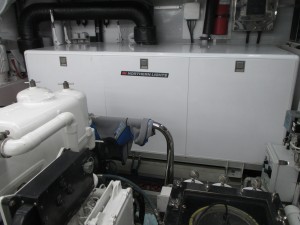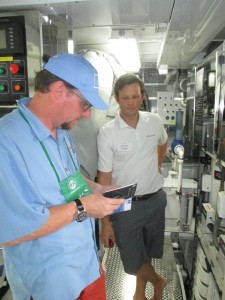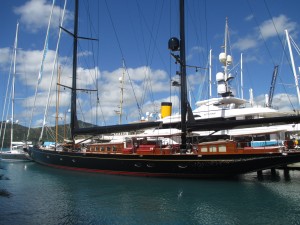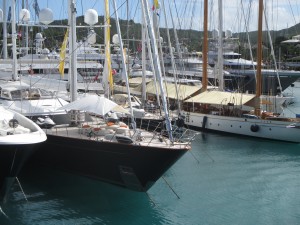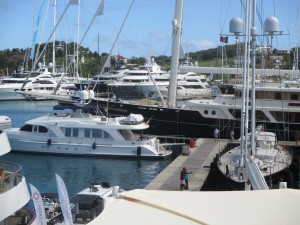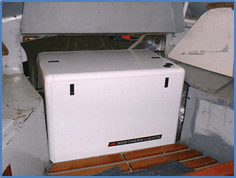A little over a year ago I had spinal surgery. It was not something I wanted to do and, indeed, did everything I could to avoid it. In the process, I saw 13 different health professionals. Of those 13, only 2 agreed on what was wrong and what action to take. They were both wrong. Of the other 11, not only did they disagree with the other 10 opinions, but they said that the previous advice was the worst thing I could possibly do.
This gave me a greater appreciation of what I’ve devoted the last 35 years in dealing with: diesel engines. Although there are a variety of opinions on diagnosis and treatment of diesel maladies, they should not differ that much.
Unlike the human body, diesel engines are very simple devices. All they need is Air, Compression and Fuel. If they have that, they will run. They may not run all that well, but they will run. Getting them to run well may take a bit of finesse, but they will run.
The principles of diesel engine operation was best described to me as Suck, Squeeze, Bang, Blow. This applies to 4 stroke diesel engines, of which the vast majority of modern diesels are. The first down stroke happens with the Intake Valve open. This “sucks” in air. As the piston starts its second stroke upward the intake valve closes. This causes the air to compress or “squeeze”. At or near Top Dead Center, fuel in injected. The atomized fuel hitting the hot compressed air causes it to ignite or “bang”. This causes the third stroke downward, or the “power stroke”. On the upward 4th stroke, the exhaust valve opens and the ignition residue, or “exhaust” is “blown” out, completing the 4 cycles of a diesel engine.
Take one of the 3 elements required away, and the engine will not run. So let’s review them in order of simplicity to identify.
Fuel. To determine if there is fuel, you can loosen the high pressure pipes at the injectors. You don’t want to completely disconnect it, and you certainly don’t want to get body parts or anything you want to hang onto into the potential spray pattern. Injection pressures can exceed 20,000 psi on some engines. By loosening the connectors though, you should be able to see if fuel is coming out. If there is no fuel, you need to work your way backwards to see where the fuel is being interrupted. A shortcut to this sometimes tedious process is to determine if it is a “boat” problem, or an “engine” problem. This can be done by gravity feeding fuel to the low pressure fuel pump. A simple way is to disconnect the fuel inlet and return lines. Run both into a gallon jug of known good, clean diesel. Bleed the air out of the system per the manufacturer’s instructions, then try to start the engine. If the engine starts, you have a “boat” problem. If the engine doesn’t start, then you have an “engine” problem. Now you can troubleshoot with a narrower focus.
Air is the next easiest to determine. Air not only includes air going into the engine, but exhaust “air” leaving the engine. So you need to check it from Appetite to Ass…er, Exhaust. Air In is pretty easy. If restricted, you usually get warning signals such as black exhaust. Intake air problems can include a dirty air filter or a plugged after cooler. Start from the beginning and check everything until you can look inside the intake ports on the head. If there is nothing in the way, then it is not Air In. Air Out is more problematic. We have seen everything from plugged exhausts to collapsed inner liners of the exhaust hose. We once had a customer who rebuilt his engine three times before he finally looked at his exhaust elbow. It was plugged with carbon, and its 2” port had narrowed to about ¼”. Again, start at the beginning and work your way to the end. It is very common to find the exhaust outlet plugged at the water injection point on the exhaust elbow. This is especially true of lightly loaded diesels. Extensive running of a diesel engine to only charge batteries or run a refrigeration compressor spell early death for a diesel engine.
If both Fuel and Air is present, then it only leaves compression. Compression can only be measured using a “compression tester”. It requires a gauge, a hose and an adaptor to connect the hose to the cylinder. A “cannibalized” injector is the most common adaptor. If you don’t have compression tester, you will need to hire someone who does.
There are no “set” numbers for compression. The number depends on a lot of variables, including atmospheric conditions (temperature, humidity, and barometric pressure), battery voltage, the volume of space inside the test equipment, and a few other factors. Diesel engines that have low compression almost never have identical wear on all cylinders. One cylinder will “fail” first. It might be a burned or corroded valve, a broken ring, bore wear, bore glazing, or a variety of other problems. But one, or maybe two, cylinders will fail before the others. So, when a compression test is done, the examiner is looking for differences in compression between cylinders. If they are all very close (within 50-60 psi), compression is good. If all are reading on the low side, a commonly used technique is to squirt oil into the cylinder and do a second test. If the compression comes up significantly, the problem tends to be rings. If the compression does not, the problem is most likely valves or, more precisely, the failure of the valves to seat tightly in the head.
So, unlike the human body, diesel engines are pretty straightforward. If you are getting a lot of different diagnoses and treatment suggestions, you are talking to a lot of the wrong people. It’s time to seek out someone who has been trained and has experience with your particular engine. If you can find 2 such people, then get your second opinion. They ought to be pretty close. Hopefully they won’t tell you that, what the other guy said, was the worst possible thing you could do.


